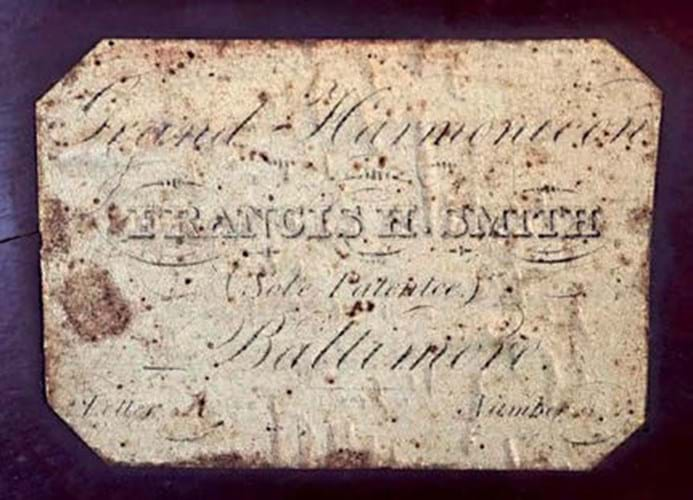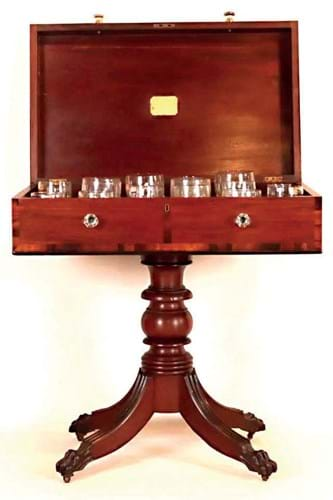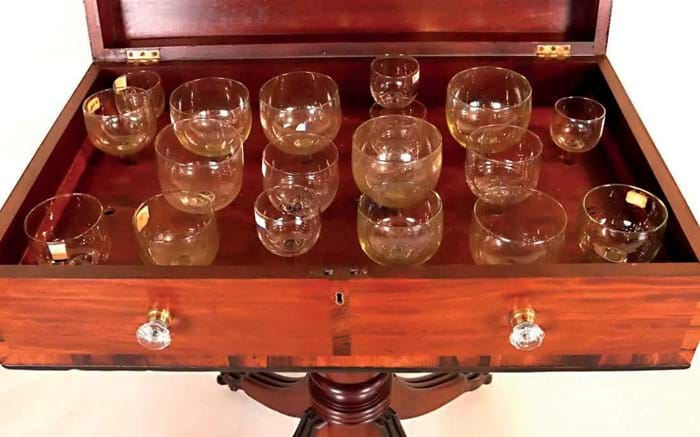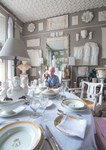However, the crystallophone, an instrument composed of glass vessels to create music, is a more recent phenomenon.
The Irish musician Richard Pockrich is credited as the first to play the ‘glass harp’ in the 1740s with various musically minded entrepreneurs championing various forms of the instrument as a parlour amusement into the 1750s.
It was none other than Benjamin Franklin who in 1761 ‘invented’ what he called the glass harmonica that used graduated bowls to produce three octaves of sound by means of friction.
Francis Hopkins Smith (1792-1872), of Northampton County, Virginia, patented his version of the crystallophone, which he called the Glass Harmonicon on April 7, 1785.

The label for Francis Hopkins Smith.
Smith’s glasses were blown to pitch with each engraved with the note to the base. Offering his instrument with an accompanying manual Tutor for the Grand Harmonicon published in 1825, Smith advertised that the instrument was easy to play, claiming “a few weeks practice will make a pleasing performer”.
Most, if not all, of Smith’s Glass Harmonicons were manufactured in Baltimore between c.1830-50 with prices ranging from $18 for the standard two-octave model to $85 for the 24-bowl harmoniums with elaborate cases that doubled as occasional furniture.
It is estimated that only around 30 of these survive with most of them residing in American museum collections.
The labelled example offered by Bloomfield, New Jersey, auction house Nye & Co on September 13-15 had a provenance to the dealership Stanley Weiss. It was hammered down at $8500/£6800 (plus 25% buyer’s premium) against an estimate of $3000-5000.
















